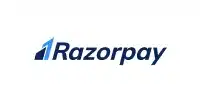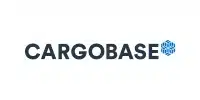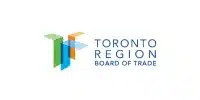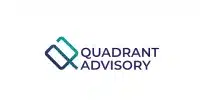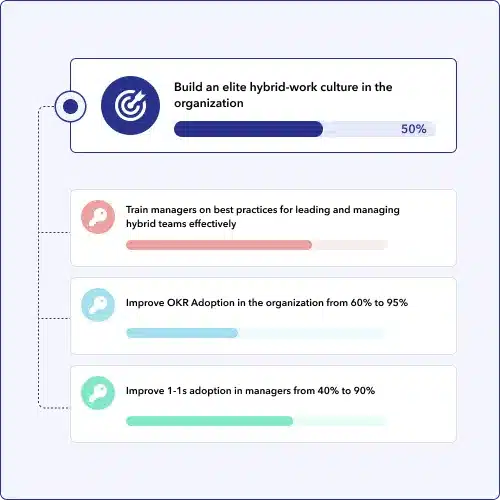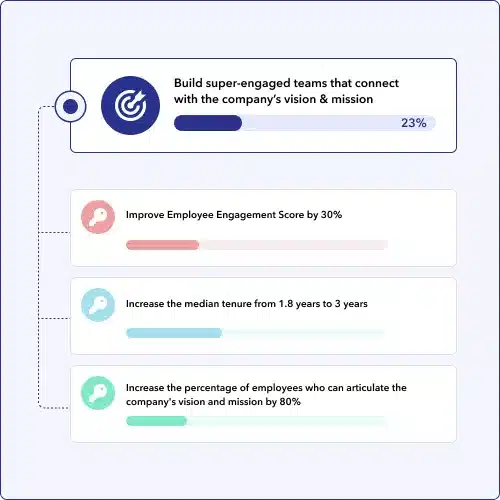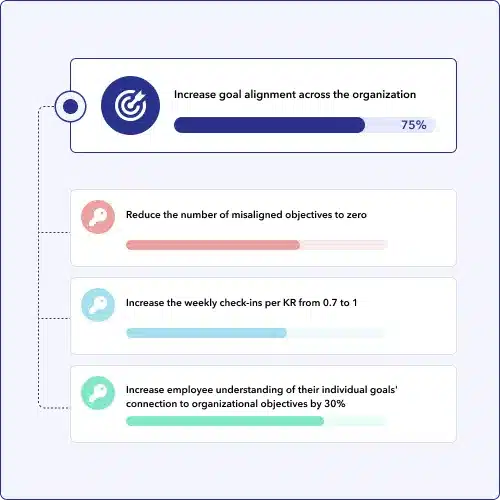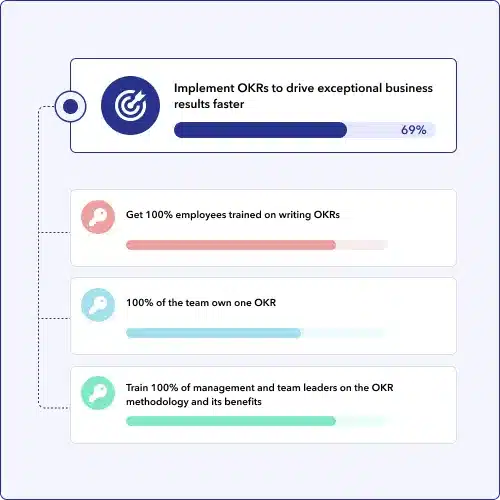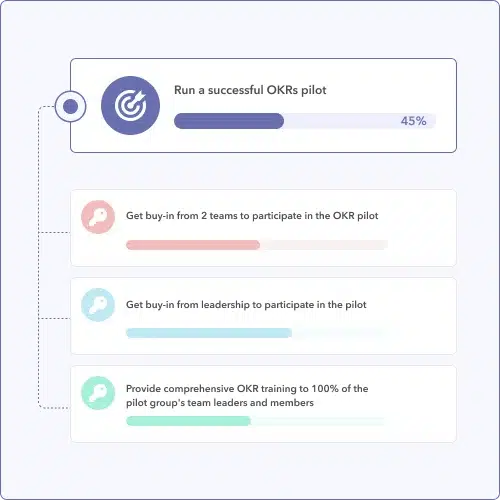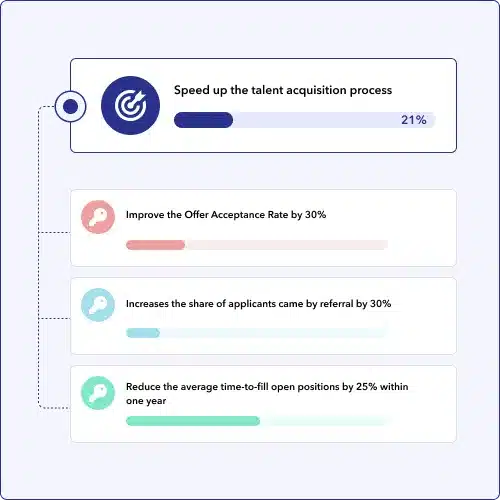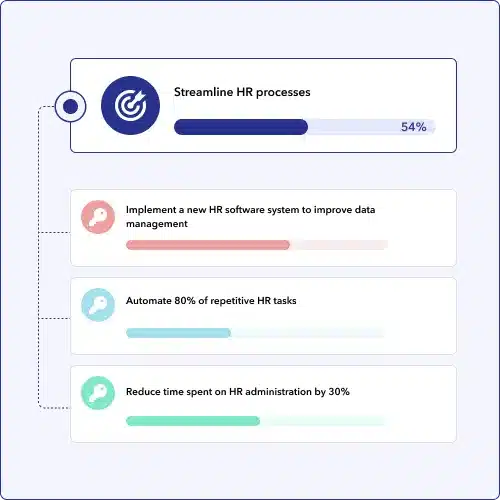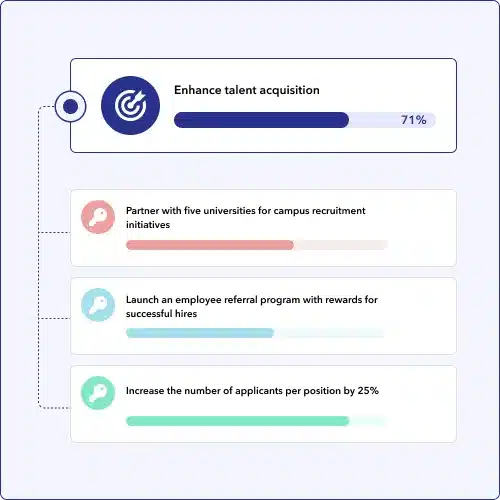Why are OKRs important for HR teams?
OKRs are important for HR teams because they provide a structured and measurable approach to achieving HR goals that support the organization’s broader business objectives. By setting specific and measurable HR objectives and key results, HR teams can track progress towards achieving their goals and measure their impact on the organization.
How do I write effective HR OKRs?
Effective HR OKRs should be specific, measurable, and aligned with the overall business strategy. HR OKRs should focus on outcomes, such as employee engagement, retention, or talent acquisition, rather than outputs like the number of job postings or resumes received. HR OKRs should be regularly reviewed and updated to reflect changes in business needs and ensure continued relevance.
How many OKRs should I set for my HR team?
The number of OKRs you set for your HR team will depend on the size of your team and the scope of your initiatives. It’s generally recommended to limit the number of objectives to three to five per quarter to ensure focus and clarity.
How do I measure the success of my HR OKRs?
The success of HR OKRs should be measured by the progress made towards achieving key results. This can be done through regular tracking and reporting, as well as employee surveys and feedback. HR OKRs should be reviewed and adjusted as needed to ensure they remain relevant and achievable. By setting and achieving HR OKRs, HR teams can drive meaningful change and make a positive impact on the organization’s overall success.
How do I ensure my HR OKRs are aligned with the overall business strategy?
To ensure HR OKRs are aligned with the overall business strategy, HR teams should engage in regular communication and collaboration with other departments and leadership. This can involve attending cross-functional meetings, seeking input from other departments, and regularly reviewing and updating HR OKRs to ensure alignment with broader business objectives.




